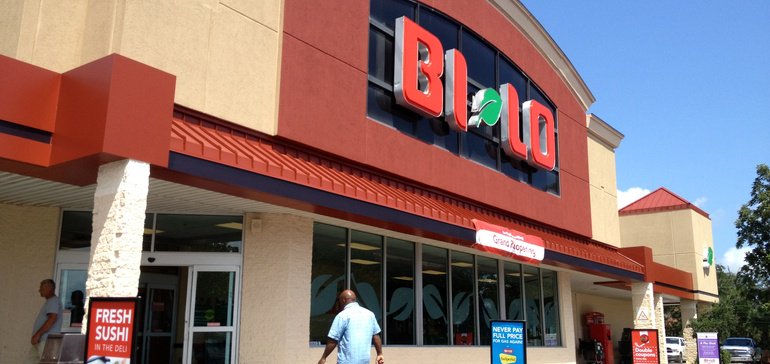Dive Brief:
- Southeastern Grocers has entered a restructuring agreement with a group of creditors holding 80% of the company’s debt, and will file for a pre-packaged reorganization plan under Chapter 11, according to a news release. The company will close 94 stores across its Winn-Dixie, Bi-Lo, Harvey’s Supermarket and Fresco Y Mas banners, and keep another 582 operating.
- Southeastern aims to reduce its debt by $500 million, allowing it to increase its capital expenditures budget for new stores and store remodels. The Jacksonville, FL-based company said it will exit bankruptcy after 90 days.
- “Southeastern Grocers is faced with a critical milestone in its transformation and we have made choices for our future and long-term growth potential,” Southeastern Grocers CEO Anthony Hucker said in a statement. “We conducted a thorough review of our strategic options and determined that this financial restructuring is in the best interests of our associates, customers, supplier partners and the communities in which we serve.”
Dive Insight:
Like Tops Markets, which recently filed for bankruptcy, Southeastern Grocers wants to get out from under a mountain of debt and effectively invest in its business.
The company has been hampered by private equity owner Lone Star Capital, which has paid itself north of $800 million since 2012, according to a recent Bloomberg report, while neglecting to invest significant capital in its portfolio of supermarkets. The result, along with the debt pileup, is that Southeastern operates a lot of stores that have struggled to stand out against stronger competitors.
In Florida, Winn-Dixie has long played second fiddle to Publix, and with new blood like Sprouts Farmers Market and Aldi moving in, it’s becoming increasingly irrelevant. The same goes for Bi-Lo, which has struggled to compete against stronger chains like Harris Teeter.
Despite its debt woes, Southeastern has implemented efficiency measures, invested in price drops and remodeled stores in recent months. It has also focused on converting underperforming locations to either its discount banner, Harveys, or the Hispanic format, Fresco Y Mas — both of which are well differentiated and offer value that’s more in line with local consumer demand.
The question is, will Lone Star invest enough money to make Southeastern competitive? Southeastern notes in its bankruptcy release that it intends to invest interest savings in new stores and store remodels. But private equity has always been reluctant to deeply invest in grocery chains, and Southeastern’s stores need a lot of capital to bring them up to speed. Winn-Dixie and Bi-Lo remodels have been patchwork lately, and the Harveys and Fresco Y Mas rebrands, while promising, haven’t been widespread enough to have much of an impact.
Still, Southeastern has a smart management team led by CEO Anthony Hucker, whose resume includes stints with Walmart and Aldi UK. In the company release, he set an optimistic tone, stating that the company has made difficult choices and is on its way to becoming a more modern, competitive retailer.

